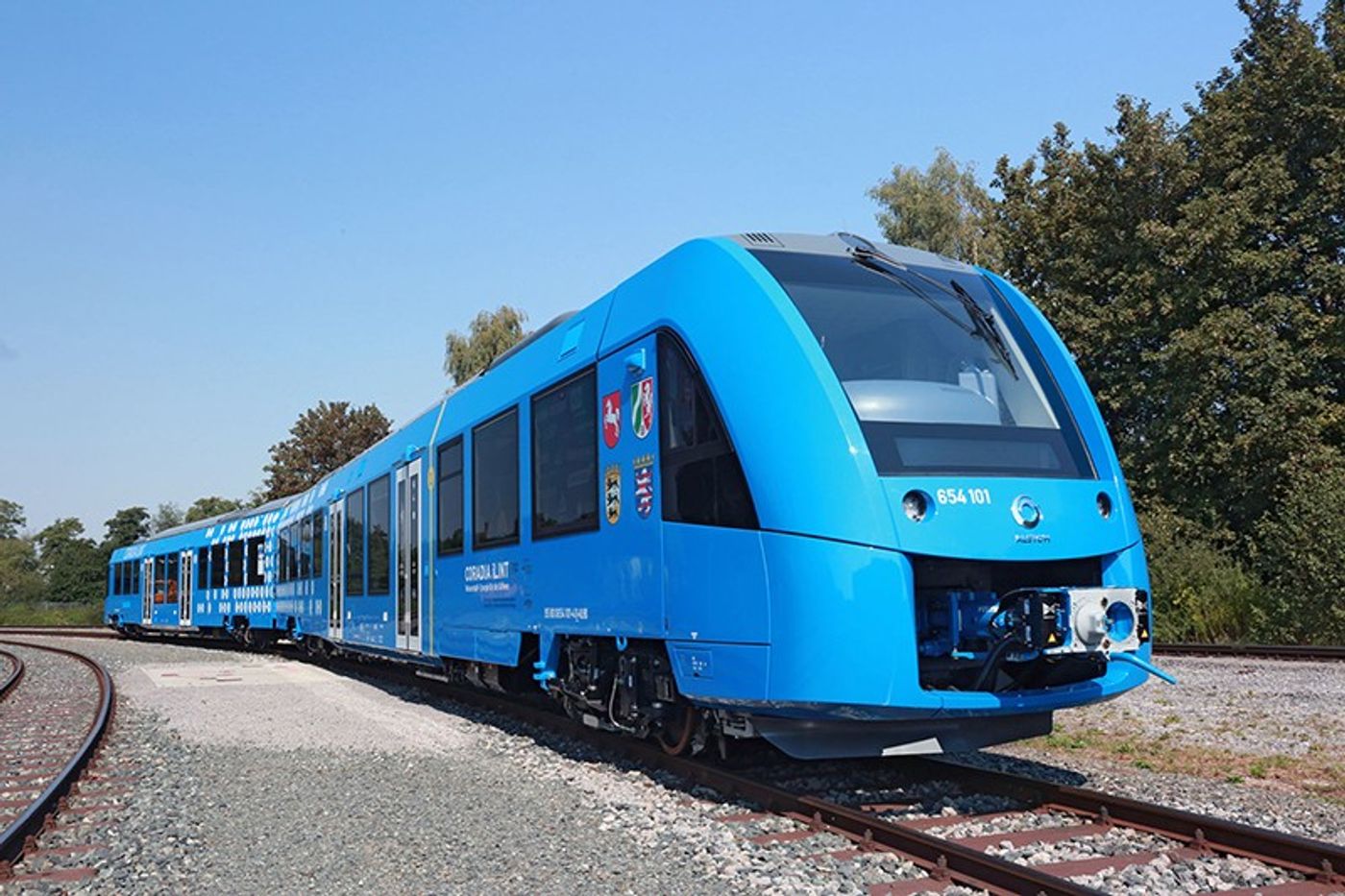Germany is introducing the world’s first zero-emission passenger train to be powered by hydrogen. Following EcoWatch, the Coradia iLint only emits excess steam into the atmosphere, and provides an alternative to the country’s 4,000 diesel trains.
Germany alone has more than 4,000 diesel-powered train cars, according to Alstom, the company developing the train. About 20% of all of Europe's current rail traffic is hauled by diesel locomotives according to the European Union. CNN reports that the new train uses the same equipment as a diesel train but runs on hydrogen -- a waste product of the chemical industry -- as the fuel source.
According to German publication Die Welt, testing will be carried out by the end of the year. Pending successful results, the 300-passenger train will be open for the public on the Buxtehude-Bremervörde-Bremerhaven-Cuxhaven line in the German state of Lower Saxony in December 2017.
So how does this new technology work? Hydrogen power is made by burning hydrogen with oxygen to produce huge amounts of energy, where the only by-product is water. The iLint is powered by huge lithium ion batteries, and these get their energy from a hydrogen fuel tank on the roof of the train. The hydrail can travel almost 500 miles per day at speeds of up to 87mph, and the only sound it gives off comes from the wheels and air resistance. Good for all sorts of pollution!
The train was first presented at Berlin’s InnoTrans trade show in August, and it is set to be the first hydrogen-powered train to regularly ferry people over long distances. The Netherlands, Denmark and Norway have also expressed interest in the new technology.
“Alstom is proud to launch a breakthrough innovation in the field of clean transportation," said Alstom CEO Henri Poupart-Lafarge, in a statement. "It shows our ability to work in close collaboration with our customers and develop a train in only two years.”
As CityLab pointed out, the train's fuel source is effectively carbon neutral since the hydrogen used by the train actually came from waste byproducts from the chemical industry and other manufacturers. "Typically, this hydrogen is simply burned, so using it to power trains would not place any new, additional burden on the environment," CityLab wrote. "Admittedly, the production of such chemicals is itself not always carbon-neutral, but given that these substances are already being manufactured, the train project will at least ensure that this process is more productive."
Sources:
EcoWatch,
CNN,
Independent UK









